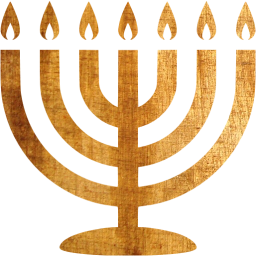
Latest Content
Below are some of my latest multi-topic content that I felt was worthy of sharing.
Counting the Omer
This year (2025) we again discussed the counting of the Omer to confirm both our beliefs and understanding of when to start the count to Shavuot.
What we again found is that there is much confusion amongst the different Jewish sects and New Testament followers of the Torah feast days – Moedim.
After reviewing this topic and scrutinising the relevant Scripture, we have come to the conclusion that Shavuot is always to be celebrated on a Sunday, beginning Saturday evening as the day begins.
We believe that Shavuot will always fall on the 15th day of the third month of the year. The start of the Omer count would therefore be the evening at the close of the 25th day of the first month (Saturday evening). Therefore the first day of the count will be the end of the 25th day (evening) leading into the 26th day of the first month (Sunday). This is the first day of the week following the feast of Unleavened Bread.
There are some who claim that Shavuot can differ in the day of the week but this theory does not align with Scripture. This claim is made due to an interpretation of the word ‘sabbath’ used in the Leviticus portion to begin the count.
The Shapira Scroll
Wilhelm Shapira astonished the European academic world in 1883 by offering for sale fifteen or sixteen leather fragments of an ancient Hebrew scroll containing parts of Deuteronomy, but in a version that deviated from the Masorah. The script of the scroll, known to us today as paleo-Hebrew, is an archaism of the pre-exilic Hebrew script. The sale offer was made to the British Museum and the asking price was one million British pounds. The British museum was willing to consider the offer and appointed Christian David Ginsburg to ascertain the authenticity of the scroll.
Ginsburg analyzed the fragments of the Shapira scroll for almost three weeks but it was Charles Clermont-Ganneau, the renowned French scholar, who publicly announced on 21 August 1883 that the scroll is a forgery. On the following day, Ginsburg wrote to Bond, the director of the British Museum, that the manuscript is in fact a forgery.
This post attempts to demonstrate that the Shapira scroll was an authentic manuscript by presenting circumstantial evidence in favour of the scroll. The evidence focuses upon physical characteristics of the scroll as well as upon paleographic aspects.
Israel Palestine Genocide
Why are there so many who still refuse to accept that what is taking place in Palestine against the Palestinian population is a genocide. It is ethnic cleansing and the world stands hypnotised into a state of ignorance. This lack of action against the perpetrators of this violent genocide will never be forgotten.n
Explore



